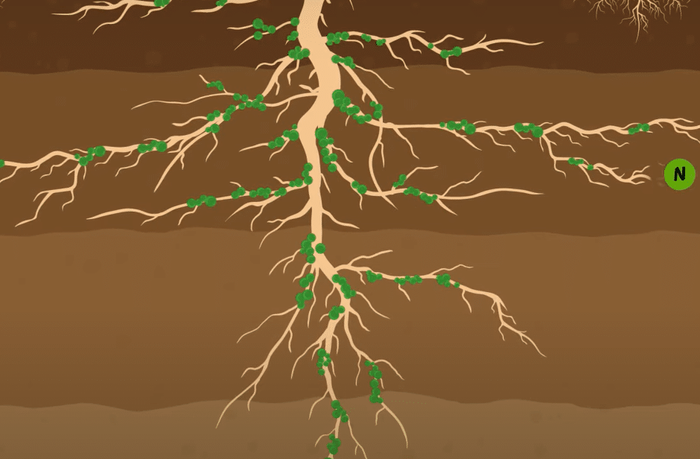Benefits of intercropping for perennial plants are numerous. The same area of land with less coffee or cocoa plants may provide lower yields but can be compensated by the harvest of additional crops.
Agroforestry systems can reach higher combined yields and better economic viability as mono cultures. Initial investments are generally higher for intercropping systems. However benefiting from the healthy ecosystem in intercropped plantations, perennial crops are more resilient over time and can produce for longer. Farmers benefit from secondary crops as food supply for household use or as additional source of income where market for these products can be accessed.
Long-term benefits
Intercropping leaves more roots in the ground, improves soil health and farm productivity in the long term. Tree roots protects from soil erosion. Fallen leaves enhance humus content and soil life.
Trees generally support water infiltration and water holding capacity of soils. They can reduce vapour transpiration and improve micro climate in the plantations in addition to sequestering carbon and mitigating climate change.
Long-term considerations
Leguminous plants lower fertilizer needs as they fix atmospheric nitrogen and increase its availability for other crops. Compared to mono cultures, bio diverse coffee and cocoa systems have more pollinators and beneficial organisms. In such an ecosystem pest and diseases incidences are lower.
Increased complexity of intercropping requires not only a high initial workload but also more knowledge, technical skills and the ability to continuously evolve and adopt decision making.
Landscape stewardship
For more substantial impacts of regenerative farming, we need to look beyond single farm. Landscape and management approaches when addressing critical environmental, social and climate issues, that extend beyond individual farm boundaries into surrounding communities and forests.
You should integrate intercropping and functionally connect intensive land use with areas of high ecological value. This offers better option to achieve multiple goals of food security and biodiversity.



















